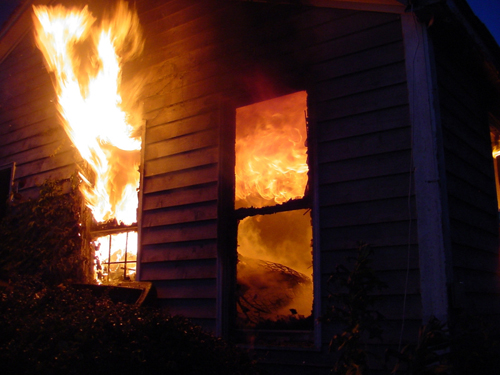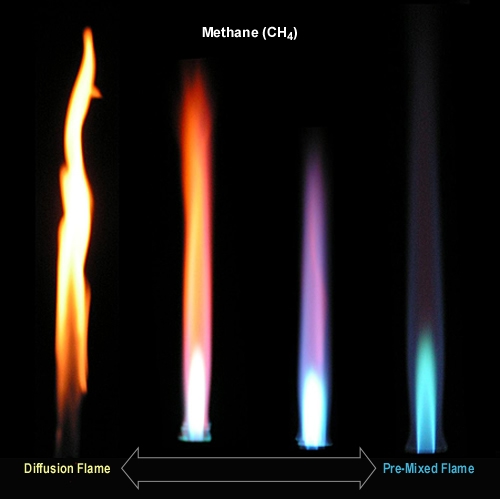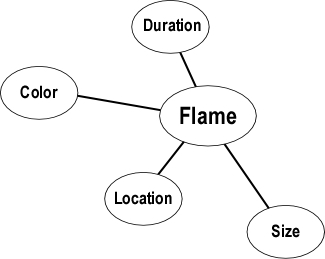Reading the Fire: Flame Indicators
Thursday, September 3rd, 2009In Reading the Fire: How to Improve Your Skills, I discussed building a concept map of fire behavior indicators as a method to increase competence in reading the fire. Construction of a concept map increases awareness of key indicators and understanding their interrelationships. I am working through this process along with you, with the latest revision to my concept map. Thus far, I have examined Building Factors, Smoke Indicators, Air Track, and Heat Indicators the first fourcategories in the B-SAHF (Building, Smoke, Air Track, Heat, and Flame) organizing scheme. For review of the discussion of the work done so far, see the following Reading the Fire posts:
- Building Factors
- Building Factors Part 2
- Building Factors Part 3
- Smoke Indicators
- Smoke Indicators Part 2
- Air Track Indicators
- Air Track Indicators Part 2
- Heat Indicators
- Heat Indicators Part 2
- Heat Indicators Part 3
Focus Question
The process of developing or refining a concept map identifying fire behavior indicators (FBI) and their interrelationships starts with the following focus question:
What building, smoke, air track, heat, and flame indicators
provide clues to current and potential fire behavior?
As you develop the flame indicators concept map it is likely that you will uncover potential additions to the Building Factors, Smoke, Air Track or Heat Indicators concept maps. You may also identify interrelationships that you may not have thought of previously. Don’t forget to go back and capture these thoughts by adding them to your other maps or placing them in a staging area for further consideration.
Caution!
Flames get quite a bit of attention. Flames showing are sure to increase a firefighter’s pulse.
Figure 1. Flame Showing!

Note: Photo by Captain Jacob Brod, Pineville-Morrow Volunteer Fire Department
It is important to remember that while flames are an important fire behavior indicator, they provide only part of the picture. There is also a reason why they are last in the B-SAHF organizing scheme. Flame indicators must be integrated with Building, Smoke, Air Track, and Heat indicators to gain a more complete picture of incident conditions.
Flames
Flames are the visible, light emitting product of combustion. In compartment fires, flames are the result of glowing particulate material (predominantly carbon).
There are several distinctly different types of flames. Pre-mixed flames result when fuel vapor is mixed prior to combustion. The flame from a gas stove or heating appliance would be a good example of a pre-mixed flame. However, most of the flames encountered in a compartment fire are diffusion flames. In a diffusion flame, fuel defuses in the air to form a reaction zone containing fuel, air, and heat in the correct proportion to support combustion. Diffusion flames result from less efficient combustion (resulting in the presence of an increased percentage of unburned particulate material). The difference in appearance of pre-mixed and diffusion flames is illustrated in Figure 2.
Figure 2. Diffusion and Pre-Mixed Flames

Note: Each of these flames is being produced by the same fuel (Methane, CH4). The difference in appearance results from where the fuel and oxygen are mixed and the resulting efficiency of combustion.
Getting Started
Firefighters’ attention is often drawn to flames like a moth to a candle. However, this is only one of many fire behavior indicators. Visible flames may provide an indication of the size of the fire (i.e., fire showing from one window vs. fire showing from all windows on the floor). The size or extent of the fire may also be indicated by the effect (or lack of effect) of fire streams on flaming combustion.
As always in developing a concept map it is important to move from general concepts to those that are more specific. Flame Indicators can be divided into several categories as illustrated in Figure 3. However, you may choose to approach this somewhat differently.
Figure 3. Basic Flame Indicators

Developing the Detail
Expanding the map requires identification of additional detail for each of the fundamental concepts. If an idea appears to be obviously related to one of the concepts already on the map, go ahead and add it. If you are unsure of where it might go, but it seems important, list it off to the side in a staging area for possible additions. Download a printer friendly version of Flame Indicators to use as a starting point for this process.
Next Steps
Remember that the process of contracting your own map is likely as important as the (never quite) finished product. The following steps may help you expand and refine the flame indicators segment of the map:
- Look at each of the subcategories individually and brainstorm additional detail. This works best if you collaborate with others.
- Have a look at the following video clip using your partially completed map and notes as a guide to identifying important flame indicators. While this video clip is of conditions on the exterior, also think about how this fire would present if viewed from the interior.
The next post in this series will discuss flame indicators in greater depth.
Ed Hartin, MS, EFO, MIFireE, CFO


